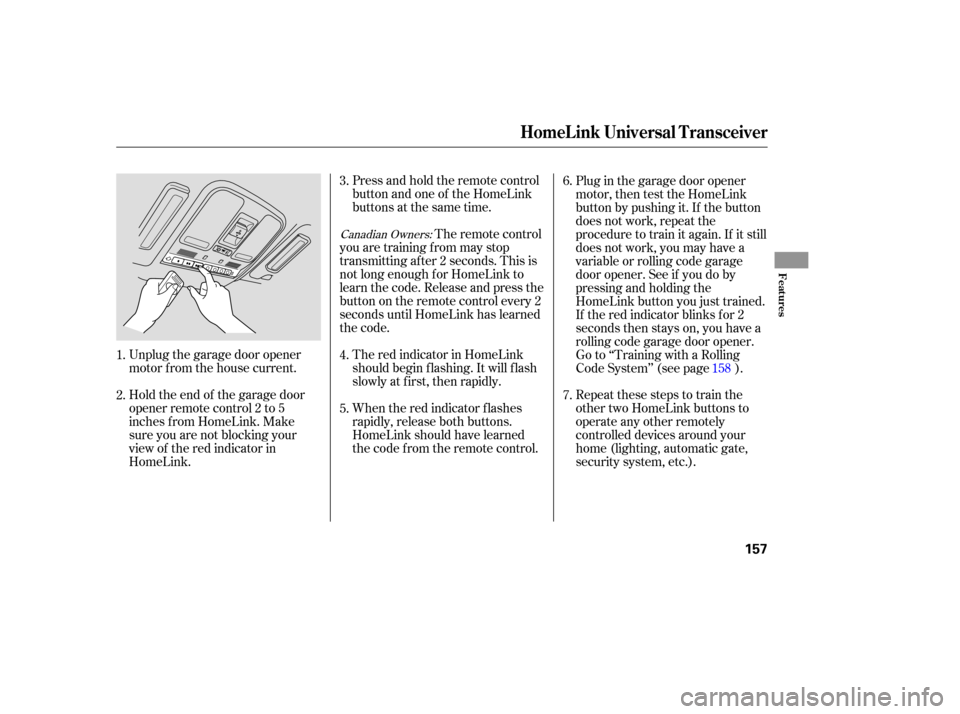Page 56 of 312

Your vehicle’s exhaust contains
carbon monoxide gas. You should
have no problem with carbon
monoxide entering the vehicle in
normal driving if you maintain your
vehicle properly.High levels of carbon monoxide can
collect rapidly in enclosed areas,
such as a garage. Do not run the
engine with the garage door closed.
Even with the door open, run the
engine only long enough to move the
vehicle out of the garage.With the tailgate open, air flow can
pull exhaust gas into your vehicle’s
interior and create a hazardous
condition. If you must drive with the
tailgate open, open all the windows
and set the heating and cooling
system/climate control system as
shown below.
If you must sit in your parked vehicle
with the engine running, even in an
unconf ined area, adjust the heating
and cooling system/climate control
system as f ollows:
Select the f resh air mode.
Select the mode.
Turn the f an on high speed.
Set the temperature control to a
comfortable setting.
The vehicle is raised f or an oil
change.
You notice a change in the sound
of the exhaust.
The vehicle was in an accident
that may have damaged the
underside.
Have the exhaust system inspected
f or leaks whenever:
1.
2.
3.
4.
Carbon Monoxide Hazard
54
Carbon monoxide gas is toxic.
Breathing it can cause
unconsciousness and even kill
you.
Avoid any enclosed areas or
activities that expose you to
carbon monoxide.
Page 158 of 312

�µ
The HomeLink Universal
Transceiver built into your vehicle
canbeprogrammedtooperateupto
three remotely controlled devices
around your home, such as garage
doors, lighting, or home security
systems.
If you are training HomeLink to
operate a garage door or gate, you
should unplug the motor f or that
device during training. Repeatedly
pressing the remote control button
could burn out the motor.
HomeLink stores the code in a
permanent memory. There should
be no need to retrain HomeLink if
your vehicle’s battery goes dead or is
disconnected. If your garage door
opener was manuf actured bef ore
April 1982, you may not be able to
program HomeLink to operate it.
They do not have the saf ety f eature
that causes the motor to stop and reverse if an obstacle is detected
during closing, increasing the risk of
injury.
Always ref er to the opening
instructions and saf ety inf ormation
that came with your garage door
opener or other equipment you
intend to operate with HomeLink. If
you do not have this inf ormation,
contact the manuf acturer of the
equipment.
If you are training the second or
third buttons, go directly to step 1.If you just
received your vehicle and have not
trained any of the buttons in
HomeLink bef ore, you should erase
any previously learned codes bef ore
training the first button. To do this,
press and hold the two outside
buttons on the HomeLink
Transceiver for about 20 seconds,
until the red indicator f lashes.
Release the buttons, then proceed to
step 1.
General Inf ormation T raining HomeL ink
Important Saf ety Precautions
HomeL ink Universal T ransceiver
Bef ore you begin
156
Page 159 of 312

Unplug the garage door opener
motor f rom the house current.Press and hold the remote control
button and one of the HomeLink
buttons at the same time.
Holdtheendof thegaragedoor
opener remote control 2 to 5
inches f rom HomeLink. Make
sure you are not blocking your
view of the red indicator in
HomeLink. The remote control
you are training f rom may stop
transmitting after 2 seconds. This is
not long enough f or HomeLink to
learn the code. Release and press the
button on the remote control every 2
seconds until HomeLink has learned
the code.
The red indicator in HomeLink
should begin f lashing. It will f lash
slowly at first, then rapidly.
When the red indicator f lashes
rapidly, release both buttons.
HomeLink should have learned
the code f rom the remote control. Plug in the garage door opener
motor, then test the HomeLink
button by pushing it. If the button
does not work, repeat the
procedure to train it again. If it still
does not work, you may have a
variable or rolling code garage
door opener. See if you do by
pressing and holding the
HomeLink button you just trained.
If the red indicator blinks for 2
seconds then stays on, you have a
rolling code garage door opener.
Go to ‘‘Training with a Rolling
Code System’’ (see page ).
Repeat these steps to train the
other two HomeLink buttons to
operate any other remotely
controlled devices around your
home (lighting, automatic gate,
security system, etc.).
2. 3.
4.
1.
5.6.
7.
158
Canadian Owners:
HomeL ink Universal T ransceiver
Features
157
Page 160 of 312

For security purposes, newer garage
door opening systems use a ‘‘rolling’’
or variable code. Inf ormation f rom
the remote control and the garage
door opener are needed bef ore
HomeLink can operate the garage
door opener.Find the ‘‘Training’’ button on your
garage door opener unit. The
location will vary, depending on
the manufacturer. Make sure you have properly
completed the ‘‘Training
HomeLink’’ procedure. Press the HomeLink button again.
It should operate the garage door.
The ‘‘Training HomeLink’’
procedure trains HomeLink to the
proper garage door opener code.
The f ollowing procedure
synchronizes HomeLink to the
garage door opener so it sends and
receives the correct codes. Press the training button on the
garage door opener unit until the
indicator next to the button comes
on. The indicator may blink, or
comeonandstayon.Youthen
have approximately 30 seconds to
complete the f ollowing steps.Press and hold the button on
HomeLink f or 3 to 4 seconds.
Press and hold the HomeLink
button again f or 3 to 4 seconds.
This should turn of f the training
indicator on the garage door
opener unit. (Some systems may
require you to press the button up
to three times.)
6.
2. 4.
5.
1. 3.
T raining With a Rolling Code
System
HomeL ink Universal T ransceiver
158
TRAINING BUTTON